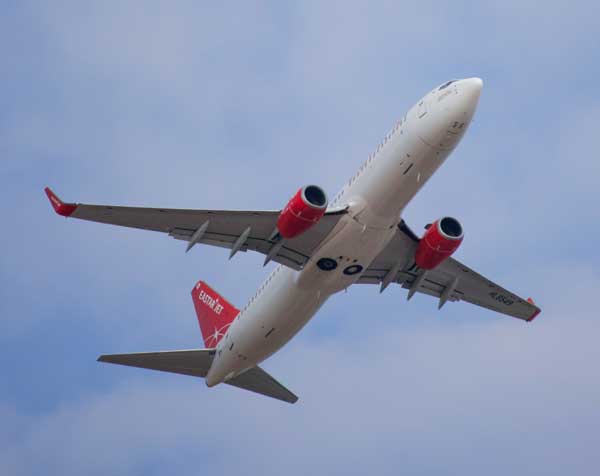United Airlines purchases SAF at O’Hare International Airport, and what is SAF?

[Photo Credit:Ahn Siwoo]
Recently United Airlines purchased SAF at O’Hare International Airport, which is the 9th biggest airport in the world.
United Airlines is leading the use of SAF and is the first airline to have flown the first commercial flight with maximum amounts of SAF.
The aviation industry is one of the most important businesses of the 21st century, and its importance is increasing day by day after the COVID-19 pandemic.
However, climate change is also one of the most important and serious issues of the 21st century, and carbon emissions from aircrafts account for 2.5% of global carbon emissions and 4% of global warming, contributing to greenhouse gasses, which lead to excessive heat nowadays.
As the aviation industry expands over time and carbon emissions increase together, one of the solutions to the carbon emissions of aircrafts is sustainable aviation fuel (SAF).
SAF is a biofuel for aircrafts, produced from biomass or waste materials, and it can reduce carbon emissions by up to 80% compared to conventional fuels.
It is set to play a very important role in reducing the carbon footprint of the aviation industry in the future.
For example, a Boeing 737-400 has a carbon footprint of 115g per kilometer per passenger and it is a lot considering that planes fly thousands of kilometers with hundreds of passengers.
In other fields such as the automobile industry, electric and hybrid cars are becoming more common.
As SAF can be produced from local resources such as agricultural waste and grease, it will reduce dependence on energy imports and activate local economies.
For example, S-oil, a petroleum and refinery company in South Korea, got certifications to produce and sell SAF from the International Sustainability of Carbon Certificates (ISCC).
South Korea does not have petroleum and this certification shows how SAF can be produced in many different countries and reduce dependence on imports.
It also has the advantage of being able to be used without modifying or changing aircraft engines, which means it can be commercialized faster than other energy sources.
On December 1, 2021, United Airlines operated the first commercial flight using 100% SAF in one engine of a Boeing 737 Max 8 and ordinary fuel in the other engine as airlines were only allowed to use a maximum of 50% SAF. It showed that SAF has no difference from regular aviation fuel and works just fine.
As such, many airlines including United Airlines, are interested and investing in SAF.
The International Air Transportation Association (IATA), has set a goal of zero carbon emissions by 2050, which is the year that the airline industry is expected to more than double in size as the issue of aircrafts’ carbon footprints and SAF has gained so much attention in the 21st century.
This means that aircraft refueling in the EU will be required to use at least 2% SAF blends starting in 2025.
This will increase every year, reaching 6% by 2030, 35% by 2035, and eventually 70% by 2050.
For all of its benefits, SAF also has major drawbacks that make airlines avoid using SAF currently with no regulations. These are cost and material availability and they make commercializing SAF challenging.
In the US, JetA costs $6.37 per gallon, while SAF costs $9.02, making airlines avoid SAF without any regulations.
To solve this problem, more infrastructure and facilities are needed, or else the inflated price will be passed onto the customers of airlines.

- Chaemoon Han / Grade 9
- Dhahran Middle School

![THE HERALD STUDENT REPORTERS [US]](/assets/images/logo_student_us.png)
![THE HERALD STUDENT REPORTERS [Canada]](/assets/images/logo_student_ca.png)
